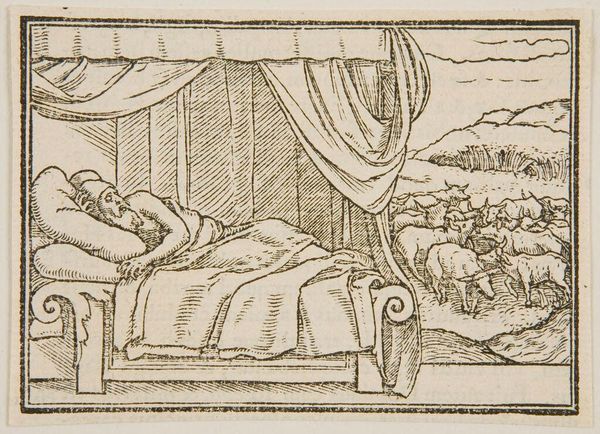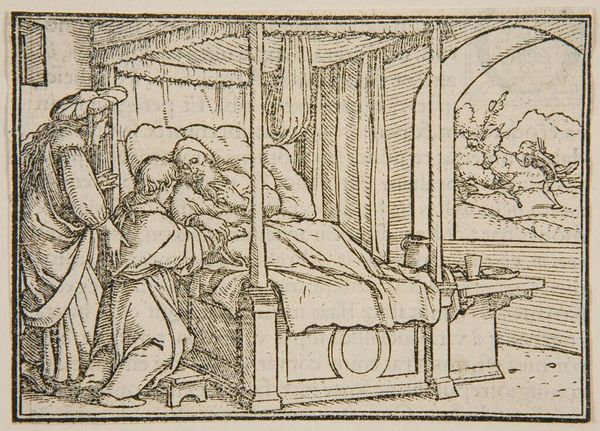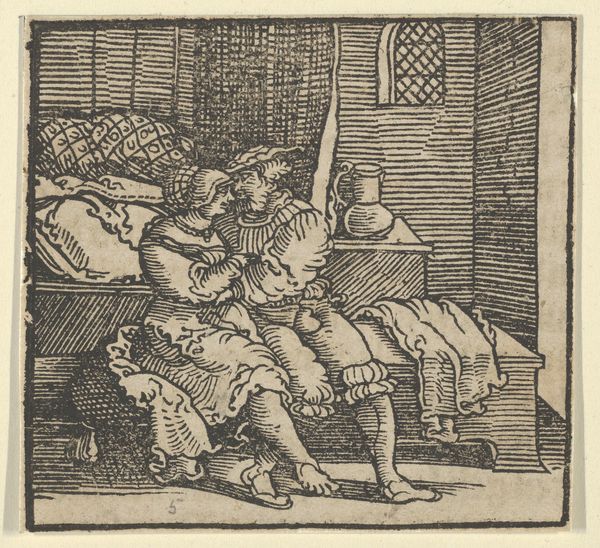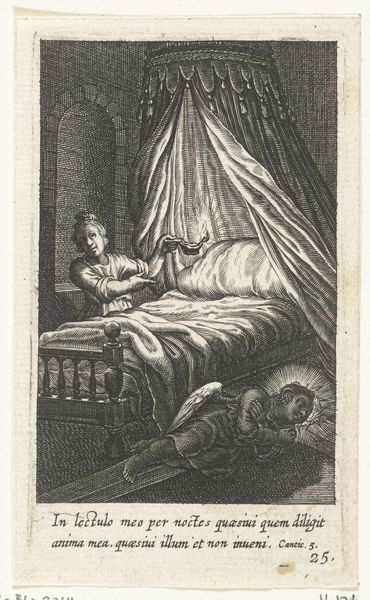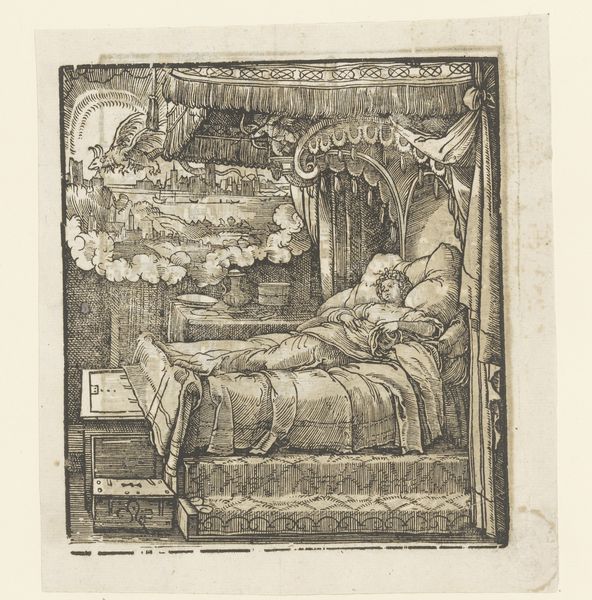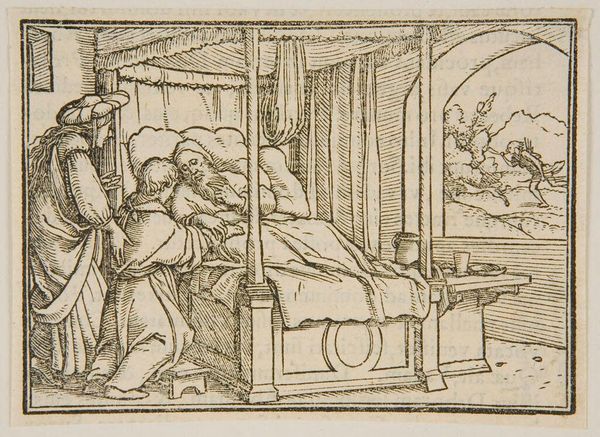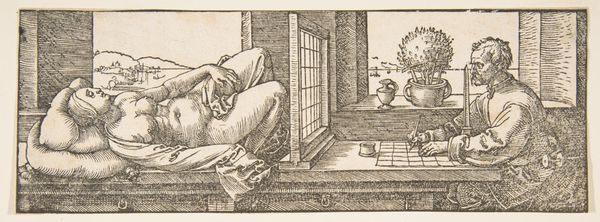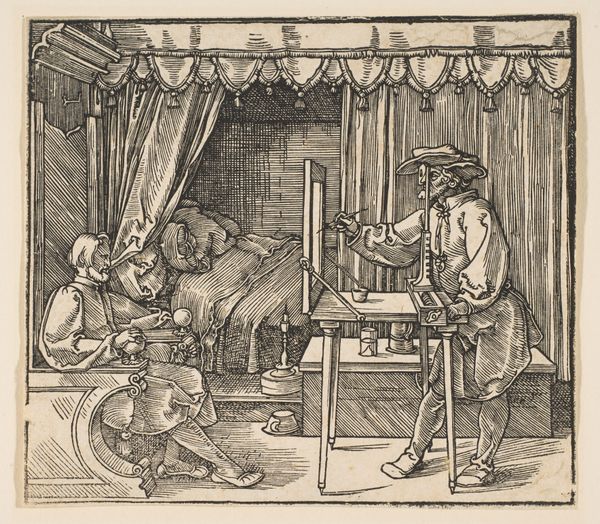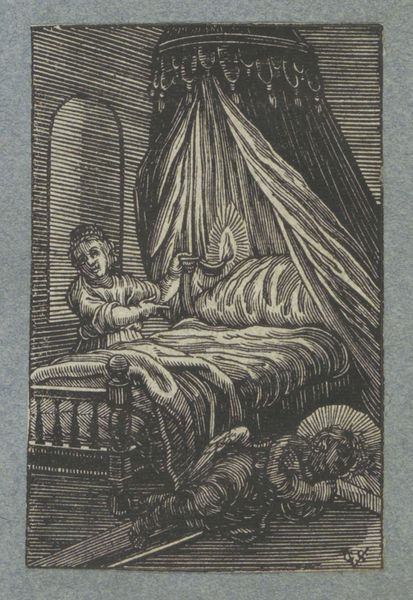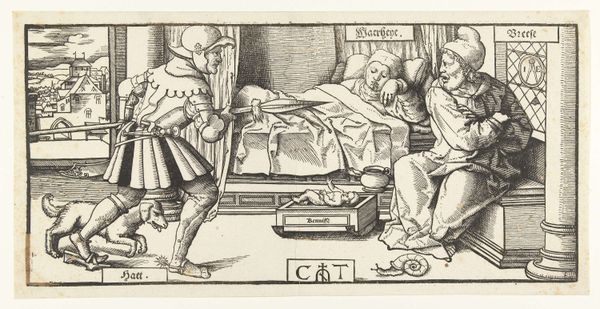
print, engraving
# print
#
pen illustration
#
pen sketch
#
landscape
#
figuration
#
line
#
history-painting
#
northern-renaissance
#
engraving
Dimensions: height 60 mm, width 85 mm, height 89 mm, width 96 mm
Copyright: Rijks Museum: Open Domain
Curator: This engaging engraving, titled "Dream of Pharaoh," was created around 1538 by Hans Holbein the Younger. Editor: It’s striking how Holbein manages to suggest both intimacy and vastness within this small print. The sleeping Pharaoh seems so vulnerable, yet the vision he experiences unfolds into this expansive landscape with a herd of cattle. Curator: The use of linear strokes truly accentuates the details and gives this a symbolic presence; consider, Holbein renders this Old Testament episode from Genesis as a commentary on political authority during the Reformation era. Pharaoh’s dream—foretelling famine and prosperity—resonated with the anxieties about leadership and stability at the time. Editor: Right. It seems dreams and their symbolism played a strong role at that period of religious reform; looking closely at the landscape details, Holbein brings forth this scene into a tangible moment for people. There are visual continuities there that were impactful for those who would see and understand the power within the dream state and, what it symbolized at the time, that are perhaps now somewhat diminished or changed from what they once meant. Curator: Precisely. The image would be readily shared, unlike large panel paintings that were accessible only in grand houses, this accessible work helped reinforce societal and historical knowledge among the public. It’s also noteworthy how Holbein used imagery familiar to his 16th-century audience to represent ancient Egypt, so that they could understand the impact of the story within their own time. Editor: This print is a potent reminder that every age recasts the past in its own image. It is like a dialogue between then and now. Holbein used the media of his time to address his own historical-cultural landscape. The questions the art brings up are very profound. Curator: Well, looking closely at Holbein’s work allows us to consider the many complexities that went into the Renaissance reception of ancient texts and also raises a question on cultural interpretations.
Comments
No comments
Be the first to comment and join the conversation on the ultimate creative platform.
